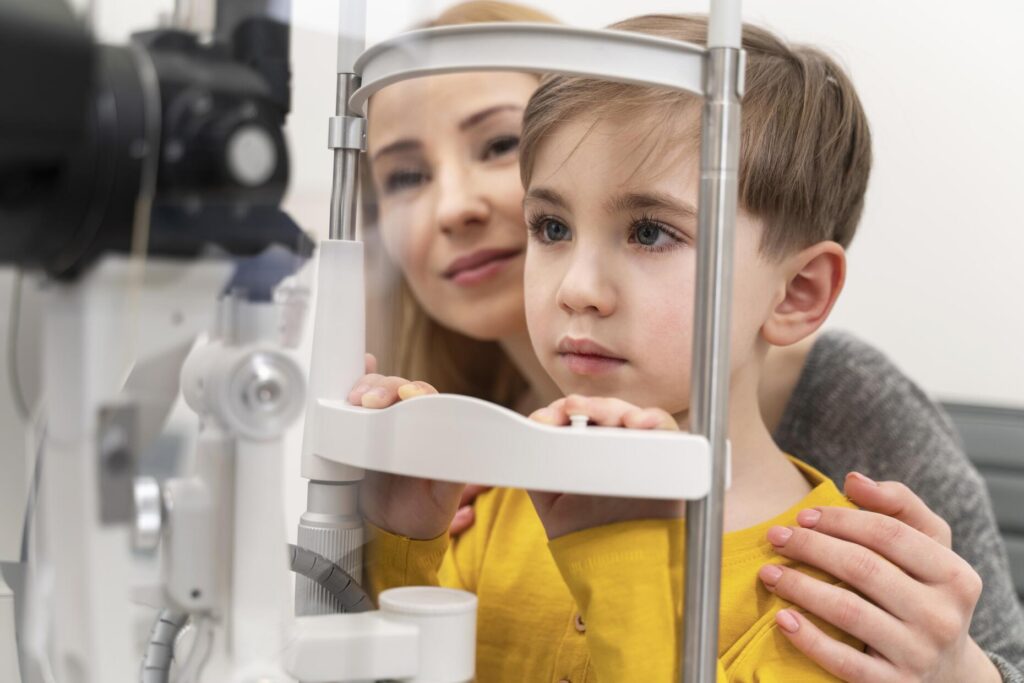Myopia Treatment
Myopia, or nearsightedness, is an extremely common condition that affects over millions of people worldwide. The cause of it is the fact that images focus the eye some little way in front of the retina, instead of on it. Therefore, distant objects appear blurry, but those close by are very clear. This eye imperfection has recently become the trend among children and youths. The best way of halting the condition from worsening with time is through early diagnosis and treatment.
Fortunately, with the modern times, a variety of treatments, from corrective lenses to even surgical procedures, are available and can more extensively help in managing, and in some cases, slow the progression of myopia.
- Corrective Lenses: Glasses and Contact Lenses
The most common option lies in putting on corrective lenses, whether eyeglasses or contact lenses. These lenses focus light directly to the retina, and this enables clear vision by the wearer. Myopia is often the first prescribed for glasses, either for adults or children. They are easy to wear, harmless, and can therefore be prescribed with incrementation in condition. Contact lenses have the advantage of flexibility, especially for individuals who dislike wearing glasses.
Even specialty contact lenses specifically devised for the management of myopia are available. Orthokeratology (ortho-k) lenses mechanically reshape the cornea at night to temporarily correct vision, providing clear vision throughout the day without glasses or contact lenses.
- Pharmaceutical Treatment Atropine Eye Drops
Another method is through the prescription of atropine eye drops, which also helps slow down the progression of myopia. This especially comes in handy for children. Low-dose atropine has emerged as a popular treatment approach as it can inhibit the elongation of the eyeball, one principal mechanism behind the worsening of myopia. Studies have shown that using atropine eye drops daily has been able to slow myopia by half. But atropine treatment does not treat myopia in a reverse way, yet it makes the situation stable and deprives progression.
Researchers do not well understand the mechanism behind how atropine slows the progression of myopia, although they know it reduces the elongation and growth of the eye. The side effects of atropine drops are usually mild and transitory, including sensitivity to light or blurred near vision. Monitoring’s with an eye doctor are necessary in helping evaluate whether the treatment is effective or not.
- Lifestyle Changes and Environmental Factors
Current research suggests that environmental and lifestyle factors are principal factors in the development and progression of myopia. When the level of children spending more time outdoors increased, there was a reduction in the age of onset of myopia. By permitting children to be outside in sunlight, the growth of the eye may be controlled, and therefore, it would be harder to become myopic. Encouraging outdoor activities and limiting screen time or extended near work, such as reading or use of electronic devices, are some of the ways that slow the onset of myopia.
In addition, diet and hydration need to be kept in balance for healthy eyes. In fact, fruits rich in vitamins A, C, and E, with omega-3 fatty acids included, help in maintaining eye health. Proper fluid balance will also ensure that one does not suffer from irritation and discomfort which might trigger possible vision problems.
- Laser Eye Surgery
Another popular treatment for adults with myopia is laser eye surgery. For example, LASIK and PRK are surgical procedures aimed at reshaping the cornea to better focus light on the retina. Such a surgical procedure often significantly reduces or even eliminates dependency on glasses or contact lenses. Of the two, however, LASIK is far more common, wherein a thin flap of the cornea is developed and then aimed at reshaping its subsurface tissues with a laser. In contrast, PRK takes off the outermost layer of the cornea before reshaping it with a laser.
- Future Treatment Developments and Findings
Research studies concerning the treatment of myopia are constantly improving, and new approaches are only in the process of being evaluated. Such recent promising studies include the integration of pharmacological treatments with other specialized lenses or environmental treatments. For instance, multifocal lenses that can delay myopic progression are currently under development and testing. Other researchers are now investigating the genetic background that underlines myopia development, which may be key in establishing specific treatments for individual cases in the future.
Conclusion
Myopia treatment has been significantly advanced over the past few years. Corrective lenses are common for myopia. Other treatments like atropine drops, lifestyle changes, and surgery can also help manage and potentially slow myopia. Awareness of these options empowers individuals to protect their vision.






